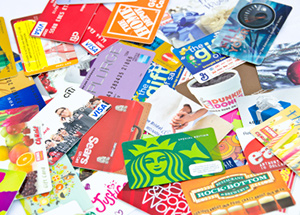 SPECIAL TO THE WEB
SPECIAL TO THE WEB
Robert Tie, CFE, CFP
Contributing Editor, Fraud Magazine
A young man walked into a Sony retail store in Central Valley, New York not long ago. With the help of a salesperson, he selected a wide-screen television, a sound system and a laptop. The total cost of these items was nearly five figures.
"And what payment method will you use today?" the salesperson asked as they approached the counter.
 "A couple of gift cards," the customer said, presenting them.
"A couple of gift cards," the customer said, presenting them.
The salesperson, who happened to be the store manager, looked at him for a moment. "Let's see how much is on them," she said. Running the first card through a special reader, she squinted at the display, and passed the card through again. After double-checking the second card as well, she told the customer, "Each of these is supposedly worth $5,000." She laid both cards on the counter and wrote their serial numbers on a scrap of paper.
"Yup," the man said. "Everything alright?"
"These are extraordinarily large denomination cards. So I have to ask you for some identification," the manager replied.
"Absolutely," the customer said, patting his pockets as he snatched up both cards. "But I think I left my wallet in the car."
"I see," the manager answered. "I'll be back in a moment."
Inside a black glass dome on the ceiling above the service counter, one of the store's digital video recorders took in the entire scene. It captured no sound, but was placed to view both sides of the counter. Nearby, other cameras took side-profile footage of that area and the entire store.
These devices recorded how, when the manager turned away, the customer quickly left the store and blended into the crowd of passing shoppers. A moment later, the manager was on the phone to Sony's corporate office in New Jersey. Soon she was reading the serial number of each card to Lynn Schiess, CFE, LPQ, LPC, who at that time was a fraud specialist in Sony's loss prevention unit. (Schiess now is a loss prevention auditor with apparel manufacturer Lacoste.)
Schiess discovered that the cards had been purchased recently in a nearby store that had been closed for more than a year. That just didn't add up. Clearly, someone — perhaps an employee in another store — had coded the cards in an unorthodox manner, which cast doubt on whether Sony had ever received payment for them. As Schiess would eventually learn, Sony's internal controls at the time didn't provide for post-transaction assessments of how customers had paid for gift cards. And that turned out to be a major unmitigated fraud risk.
Read how Schiess improved his company's internal controls in the full article on Fraud-Magazine.com.


